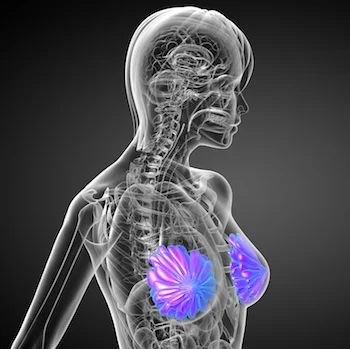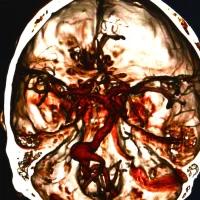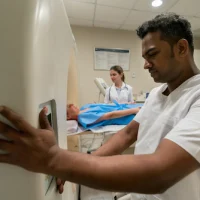Researchers combine mammography with AI to determine the biological composition of a tumor's tissue, developing a new method that may help reduce the number of unnecessary breast biopsies, according to a new study published in the journal Radiological Society of North America.
Research has shown that more than 10 percent of women are called back for additional diagnostic imaging and in many of these cases the biopsies for abnormal findings are ultimately proven to be benign. Mammography nevertheless has continued to be effective at reducing the number of deaths resulting from breast cancer by detecting cancers at the earliest possible stage to be treatable.
You may also like: Radiologists' role in developing AI tools for clinical use
"The callback rate with mammography is much higher than ideal," said the study's first author, Dr. Karen Drukker, research associate professor from the Department of Radiology at the University of Chicago. "There are costs and anxiety associated with recalls, and our goal is to reduce these costs but not miss anything that should be biopsied."
For this study the researchers' team used 109 dual-energy mammograms acquired from women with breast masses that were suspicious or had a higher potential of a malignancy- lesions that would typically be biopsied otherwise- immediately before having a biopsy and the resulting biopsies revealed 35 masses to be invasive cancers and 74 to be benign lesions.
Dr. Drukker and her team of colleagues studied the application of a new technique named three-compartment breast imaging (3CB). The 3CB technique was developed by Dr. John Shepherd currently at the University of Hawaii in Honolulu, and his team while he was at the University of California in San Francisco. This technique may provide a biological signature for a tumor by measuring the water, lipid and protein tissue composition throughout the breast. For example, the increased appearance of water in the tumor tissue may indicate angiogenesis, or the production of new blood vessels which may indicate the early stage of cancer development.
Researchers analysed the 3CB images derived from the dual-energy mammograms and along with mammography radiomics- the use of artificial intelligence to analyse features and patterns in images that often are difficult to be detected by human perception- developed by Dr. Maryellen L. Giger and her team at the University of Chicago for computer-aided breast imaging diagnosis.
By combining radiomics and 3CB image analysis the team improved the positive predictive value- in other words the ability to predict cancer- in breast masses the radiologist deemed suspicious. This new combined method increased the positive predictive value from 32 percent for visual interpretation to 50 percent, with approximately 36 percent reduction in the need for biopsies. By missing one of the 35 cancers diagnosed, the 3CB-radiomics method achieved a 97 percent sensitivity rate.
"These results are very promising," Dr. Drukker said. "Combining 3CB image analysis with mammography radiomics, the reduction in recalls was substantial."
Dr. Drukker said this combined 3CB-radiomics approach has the potential to play an increasingly prominent role in breast cancer diagnosis and perhaps also screening. She also noted that 3CB can easily be added to mammography without requiring extensive modifications of existing equipment.
"The patient is already getting the mammography, plus we get all this extra information with only a 10 percent additional dose of radiation," Dr. Drukker said.
This new approach based on the combined 3CB-radiomics technique is still experimental and needs further work before it becomes available to patients.The research team will study how this combined approach will help radiologists reach their final determinations. In addition, they will study this approach using digital breast tomosynthesis, also referred to as "3D" mammography, which minimises the problem of overlapping breast tissue inherent to regular mammography. Dr. Drukker said that a tumor's unique water-lipid-protein signature may even become clearer with tomosynthesis.
Image Credit: iStock
References:
Latest Articles
Tomosynthesis, Mammography, Radiology, RSNA, breast cancer, diagnostic imaging, breast imaging, radiomics, Artificial Intelligence, AI, Radiological Society of North America, cancer biopsies, 3CB-radiomics, 3CB, dual-energy mammogram, Department of Radiology at the University of Chicago, University of Hawaii, University of California
Researchers use mammography to determine the biological composition of a tumor's tissue, developing a new method that may help reduce the number of unnecessary breast biopsies, according to a new study published in the journal Radiological Society of Nort










